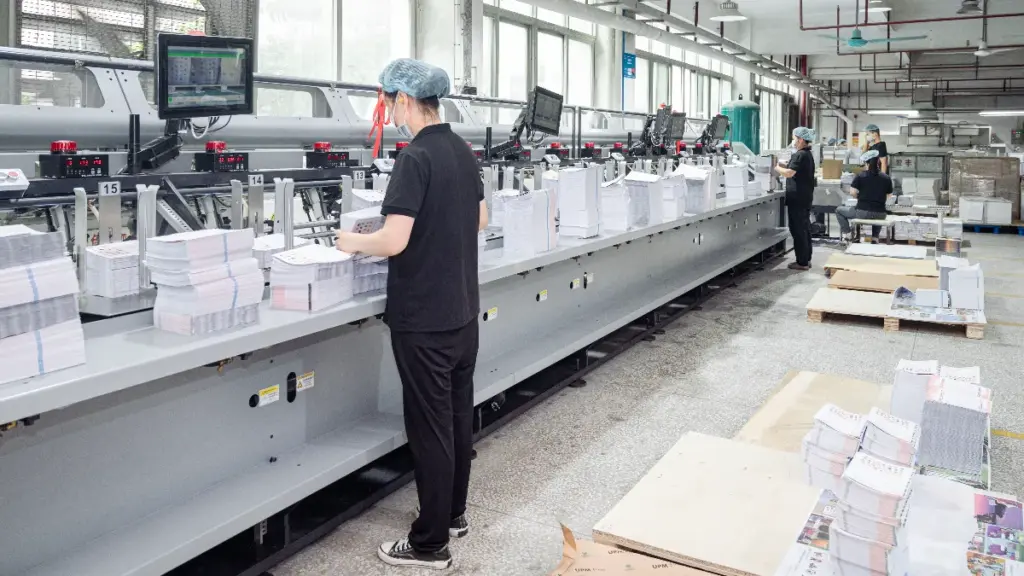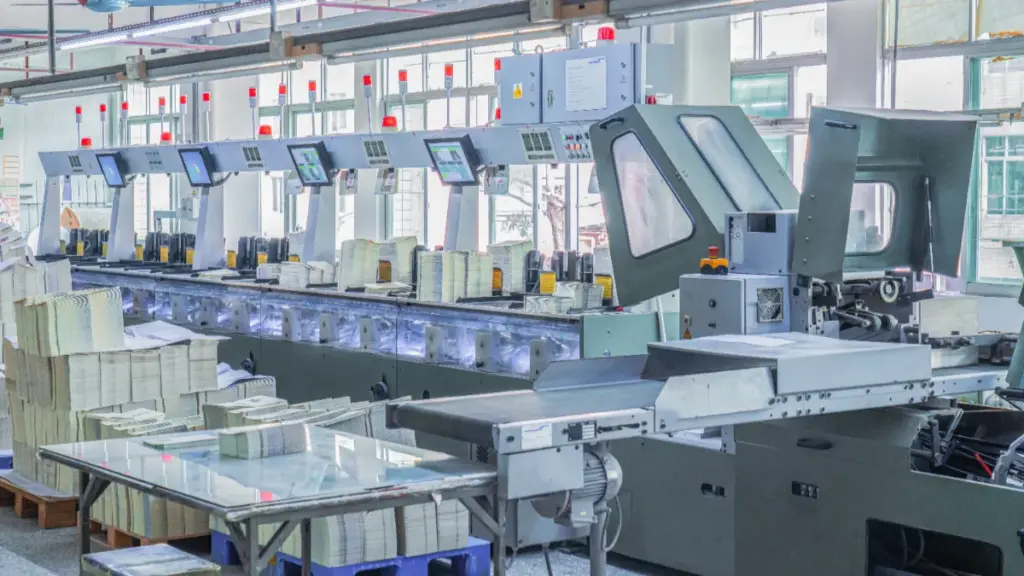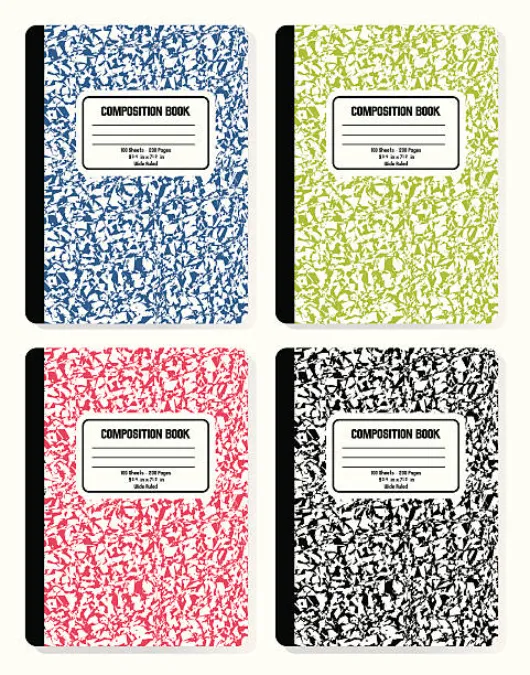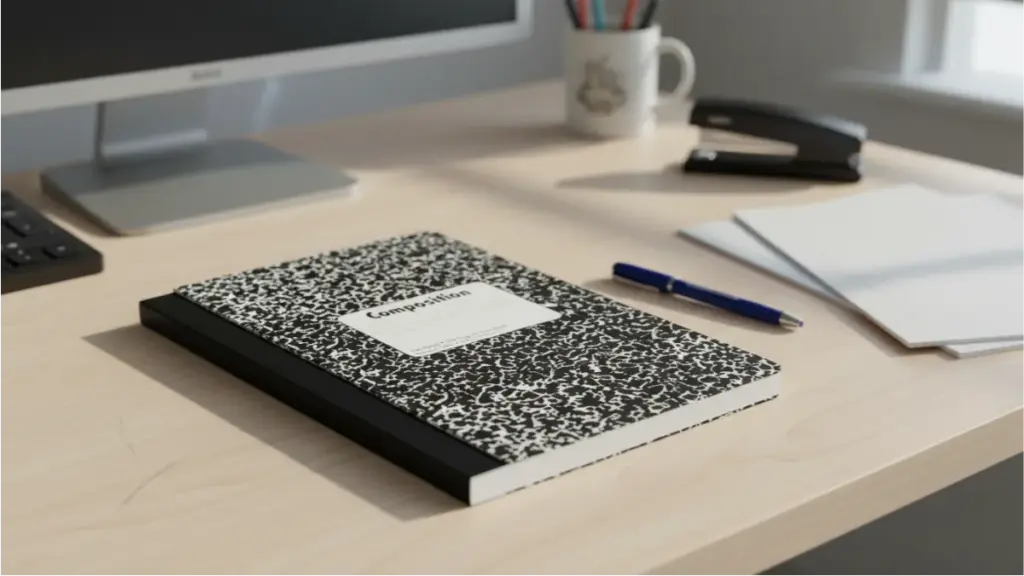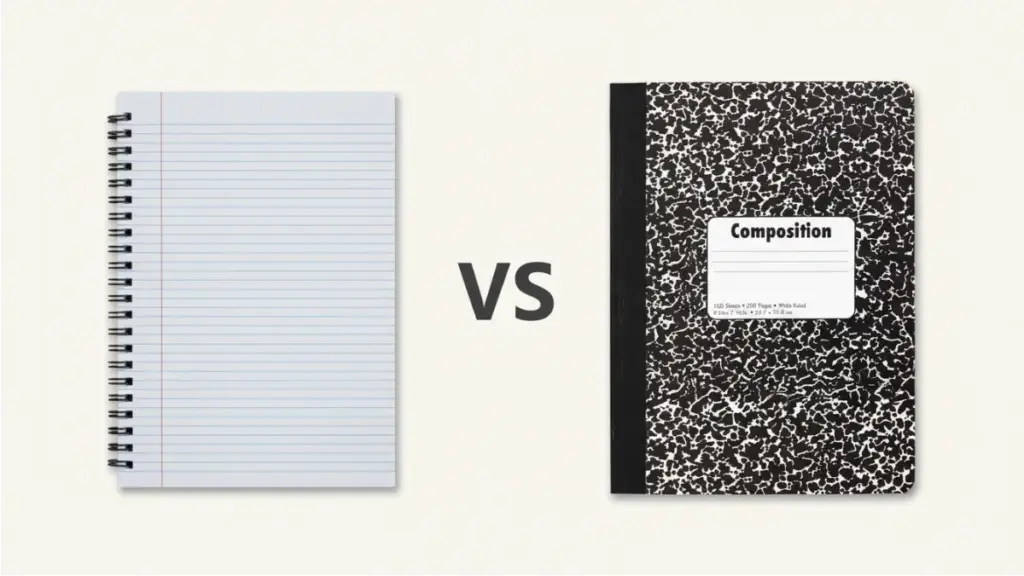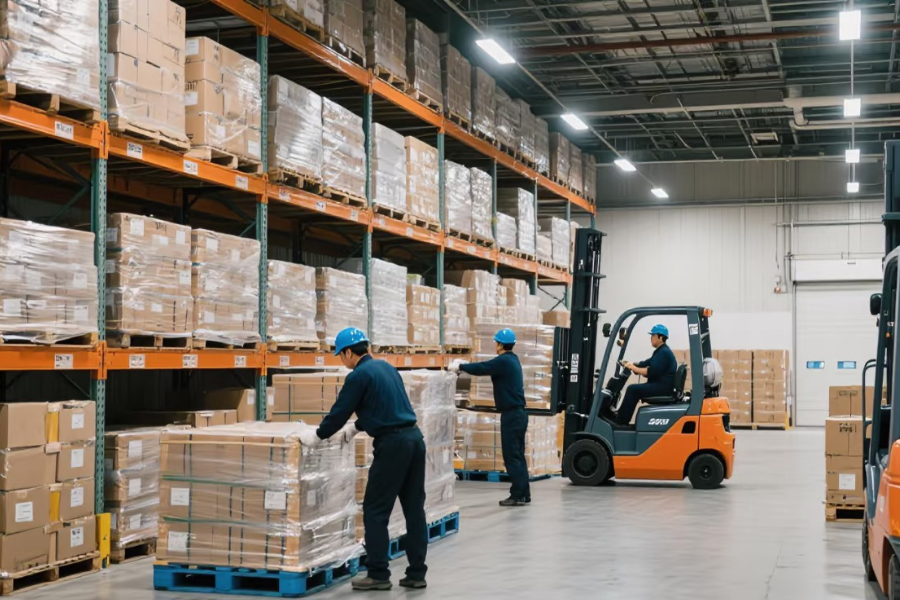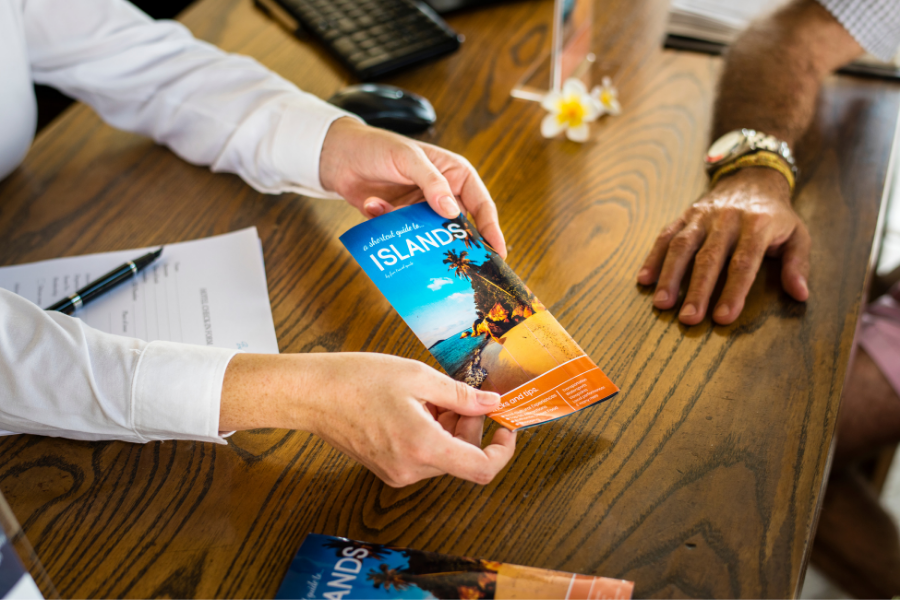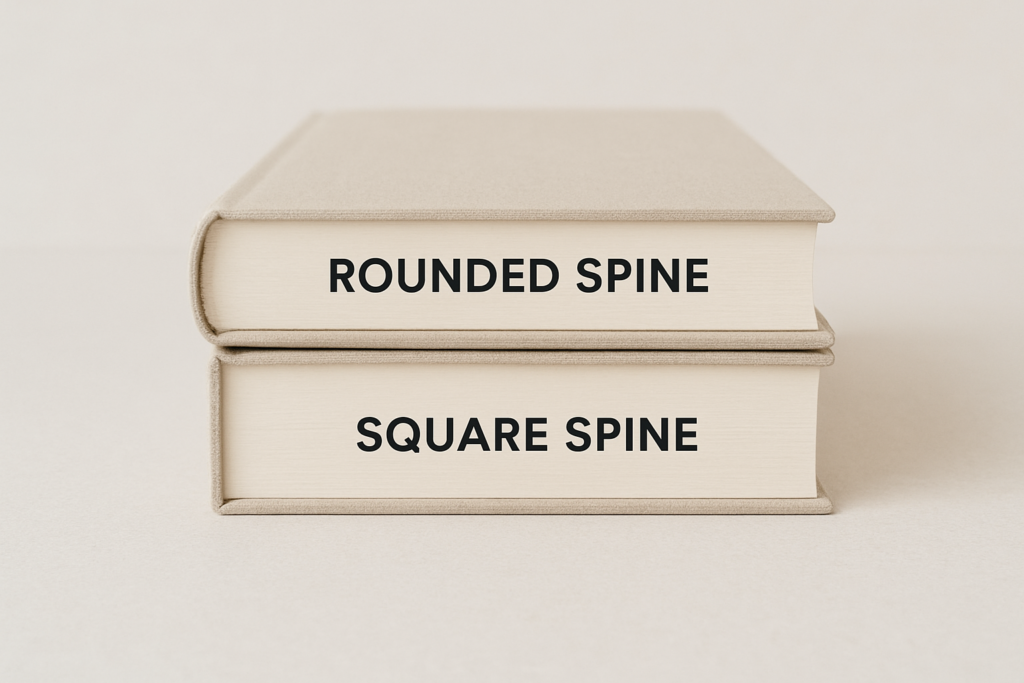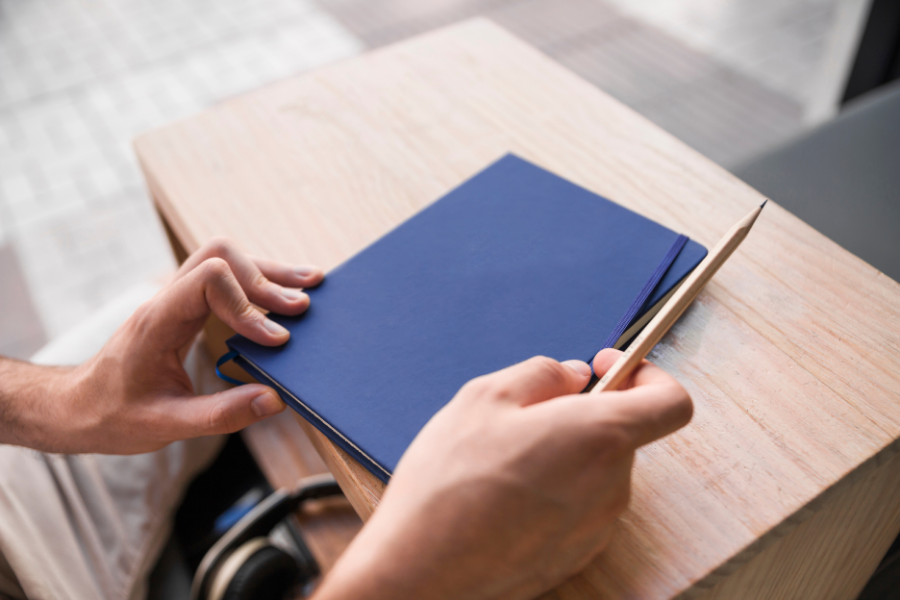In book printing, paper thickness and weight shape the look, feel, and durability of your final product. With over 27 years of experience as a professional book printing manufacturer, we know how every gram and micron matters. In questa guida, we’ll explain paper thickness, weight, and common types to help you make informed choices for your next project.
Key Paper Thickness and Weight Terms Explained
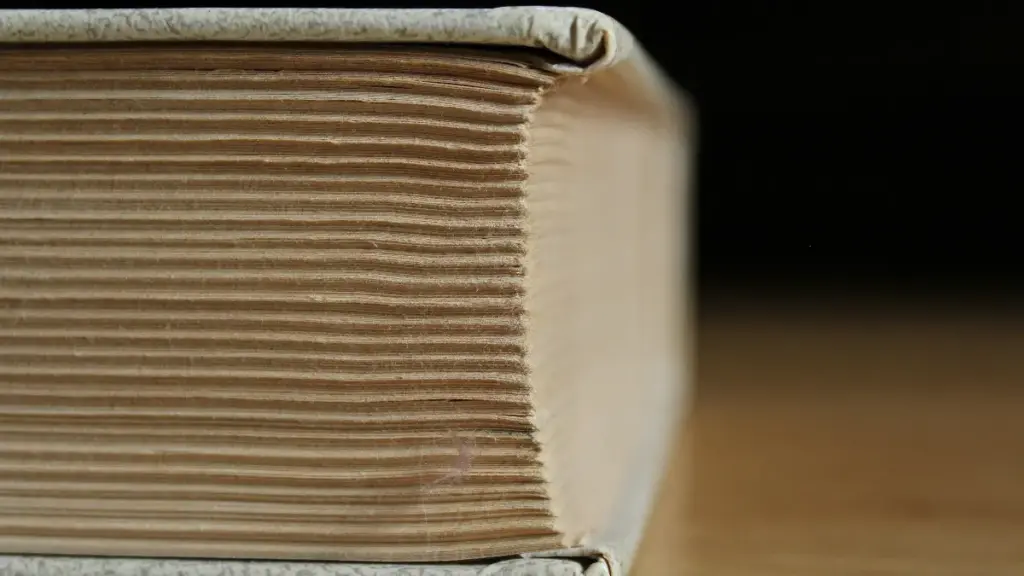
Before diving into what affects paper thickness, it’s important to understand the key terms used in the printing industry. Paper weight and thickness may seem straightforward, but they can be confusing without clear definitions.
- GSM (grams per square meter): This is the most widely used international standard for paper weight. GSM stands for grams per square meter, meaning a sheet of paper that measures 1 square meter weighs exactly X grams. Per esempio, a 100gsm sheet weighs 100 grams if it were 1m² in size. This unit helps printers compare paper internationally regardless of sheet size.
- Pinza (microns or mils): Caliper measures the actual thickness of a single sheet of paper. It’s often expressed in microns (1 micron = 0.001 mm) or mils (1 mil = 0.001 inch). A 100gsm uncoated text paper usually has a caliper around 120 microns.
- Basis weight (pounds): Common in the U.S., basis weight represents the weight of 500 sheets of paper in its “basic” size before cutting. Ad esempio, 50lb text paper roughly equals 74gsm internationally.
It’s important to note: paper weight and thickness are not always directly proportional. Two sheets with the same gsm can feel very different depending on fiber type, coating, and manufacturing. If you want to learn more, keep reading.
What Affects Paper Thickness and Weight?
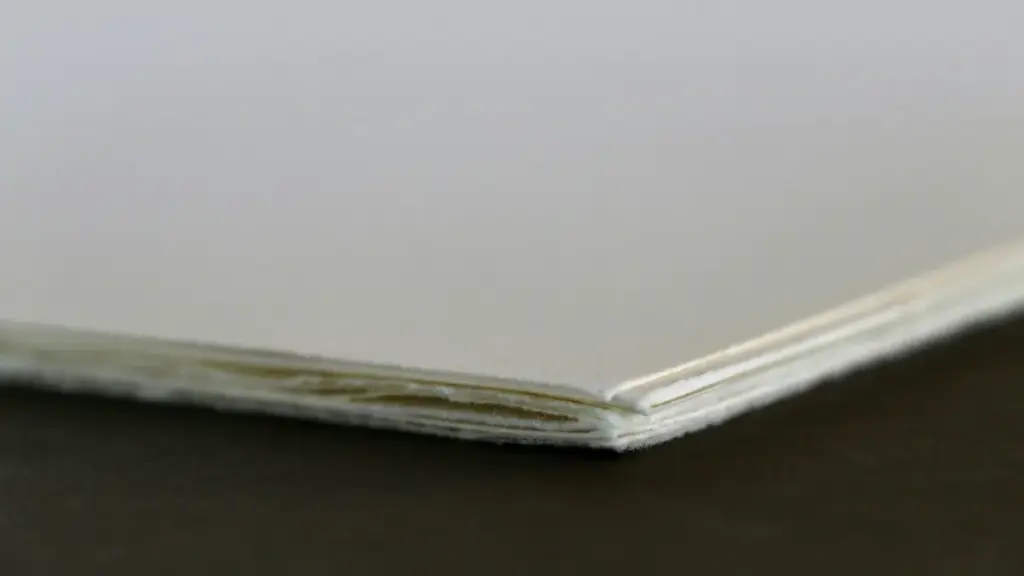
Now that we know the key terms, it’s easier to see why paper thickness and weight can vary even for the same gsm. Several factors influence these measurements:
Several factors affect these measurements:
- Paper fibers: Different wood or cotton fibers have varying densities. Cotton-based papers often feel thicker and more luxurious, even at lower weights.
- Manufacturing process: How the paper is pressed and dried influences both thickness and rigidity. Heavy pressing can make paper thinner but denser, while a lighter pressing can create a softer feel.
- Coatings and finishes: Glossy or matte coatings add microns to paper thickness and can change how the paper absorbs ink. Coated papers tend to be slightly heavier.
- Moisture content: Paper absorbs water from the environment. Higher humidity can make paper expand, while dry conditions can slightly shrink it. This is particularly important for publishers shipping books internationally.
Quick Reference Table
To give you a clear picture, here’s a simplified table comparing common paper weights, their typical thickness, and common uses in book printing:
| Tipo di carta | Misurare | Dimensions (pollici) | Peso (GSM) | Peso (LB) | Spessore (µm / mm) | Applicazioni tipiche |
| Carta patinata | A1 | 23.4 × 33.1 | 90-300 | 60-200 | 100-400 µm / 0.10-0.40 mm | Riviste, cataloghi, libri d'arte |
| A2 | 16.5 × 23.4 | 90-300 | 60-200 | 100-400 µm / 0.10-0.40 mm | Posters, brochure | |
| A3 | 11.7 × 16.5 | 90-300 | 60-200 | 100-400 µm / 0.10-0.40 mm | Flyers, libri fotografici | |
| A4 | 8.3 × 11.7 | 90-300 | 60-200 | 100-400 µm / 0.10-0.40 mm | Romanzi, Libri per bambini, segnalazioni, riviste | |
| A5 | 5.8 × 8.3 | 90-250 | 60-160 | 90-350 µm / 0.09-0.35 mm | Opuscoli, brochure | |
| A6 | 4.1 × 5.8 | 100-200 | 65-130 | 100-300 µm / 0.10-0.30 mm | Postcards, invitations | |
| A7 | 2.9 × 4.1 | 100-180 | 65-115 | 100-250 µm / 0.10-0.25 mm | Tickets, small cards | |
| A8 | 2.0 × 2.9 | 90-150 | 60-95 | 80-200 µm / 0.08-0.20 mm | Labels, mini cards | |
| A9 | 1.5 × 2.0 | 80-120 | 50-80 | 70-150 µm / 0.07-0.15 mm | Stickers, tags | |
| A10 | 1.0 × 1.5 | 70-100 | 50-65 | 60-120 µm / 0.06-0.12 mm | Small labels, samples | |
| B1 | 27.8 × 39.4 | 90-300 | 60-200 | 100-400 µm / 0.10-0.40 mm | Large posters, art prints | |
| B2 | 19.7 × 27.8 | 90-300 | 60-200 | 100-400 µm / 0.10-0.40 mm | Posters, cataloghi | |
| B3 | 13.9 × 19.7 | 90-280 | 60-190 | 100-350 µm / 0.10-0.35 mm | Flyers, brochure | |
| B4 | 9.8 × 13.9 | 90-250 | 60-160 | 90-300 µm / 0.09-0.30 mm | Riviste, opuscoli | |
| B5 | 6.9 × 9.8 | 80-200 | 50-130 | 80-250 µm / 0.08-0.25 mm | Romanzi, riviste | |
| B6 | 4.9 × 6.9 | 70-180 | 50-115 | 70-200 µm / 0.07-0.20 mm | Opuscoli, Notebook | |
| B7 | 3.4 × 4.9 | 60-150 | 40-95 | 60-180 µm / 0.06-0.18 mm | Cards, tickets | |
| B8 | 2.4 × 3.4 | 50-120 | 35-80 | 50-150 µm / 0.05-0.15 mm | Labels, small cards | |
| B9 | 1.7 × 2.4 | 50-100 | 35-65 | 50-120 µm / 0.05-0.12 mm | Stickers, tags | |
| B10 | 1.2 × 1.7 | 40-80 | 30-50 | 40-100 µm / 0.04-0.10 mm | Samples, mini labels | |
| Carta non patinata | A1 | 23.4 × 33.1 | 70-200 | 50-130 | 80-250 µm / 0.08-0.25 mm | Libri di testo, novels, riviste |
| A2 | 16.5 × 23.4 | 70-200 | 50-130 | 80-250 µm / 0.08-0.25 mm | Letterheads, brochure | |
| A3 | 11.7 × 16.5 | 70-200 | 50-130 | 80-250 µm / 0.08-0.25 mm | Flyers, Libri educativi | |
| A4 | 8.3 × 11.7 | 70-200 | 50-130 | 80-250 µm / 0.08-0.25 mm | Office documents, manuscripts | |
| A5 | 5.8 × 8.3 | 70-180 | 50-115 | 80-200 µm / 0.08-0.20 mm | Opuscoli, riviste | |
| A6 | 4.1 × 5.8 | 60-150 | 40-95 | 70-180 µm / 0.07-0.18 mm | Postcards, small books | |
| A7 | 2.9 × 4.1 | 50-120 | 35-80 | 60-150 µm / 0.06-0.15 mm | Tickets, cards | |
| A8 | 2.0 × 2.9 | 50-100 | 35-65 | 50-120 µm / 0.05-0.12 mm | Labels, mini cards | |
| A9 | 1.5 × 2.0 | 40-80 | 30-50 | 40-100 µm / 0.04-0.10 mm | Small labels, tags | |
| A10 | 1.0 × 1.5 | 30-70 | 20-45 | 30-90 µm / 0.03-0.09 mm | Samples, mini tags | |
| B1 | 27.8 × 39.4 | 70-200 | 50-130 | 80-250 µm / 0.08-0.25 mm | Large textbooks, riviste | |
| B2 | 19.7 × 27.8 | 70-200 | 50-130 | 80-250 µm / 0.08-0.25 mm | Reports, riviste | |
| B3 | 13.9 × 19.7 | 70-180 | 50-115 | 80-200 µm / 0.08-0.20 mm | Flyers, brochure | |
| B4 | 9.8 × 13.9 | 70-180 | 50-115 | 80-200 µm / 0.08-0.20 mm | Riviste, opuscoli | |
| B5 | 6.9 × 9.8 | 60-150 | 40-95 | 70-180 µm / 0.07-0.18 mm | Romanzi, riviste | |
| B6 | 4.9 × 6.9 | 50-120 | 35-80 | 60-150 µm / 0.06-0.15 mm | Opuscoli, Notebook | |
| B7 | 3.4 × 4.9 | 50-100 | 35-65 | 50-120 µm / 0.05-0.12 mm | Cards, tickets | |
| B8 | 2.4 × 3.4 | 40-90 | 30-60 | 40-110 µm / 0.04-0.11 mm | Labels, small cards | |
| B9 | 1.7 × 2.4 | 30-80 | 20-50 | 30-100 µm / 0.03-0.10 mm | Stickers, tags | |
| B10 | 1.2 × 1.7 | 30-70 | 20-45 | 30-90 µm / 0.03-0.09 mm | Samples, mini labels |
Note: This table is a general guide. Each manufacturer may have small variations, so requesting samples is always a good practice.
Common Paper Types and Their Typical Thickness
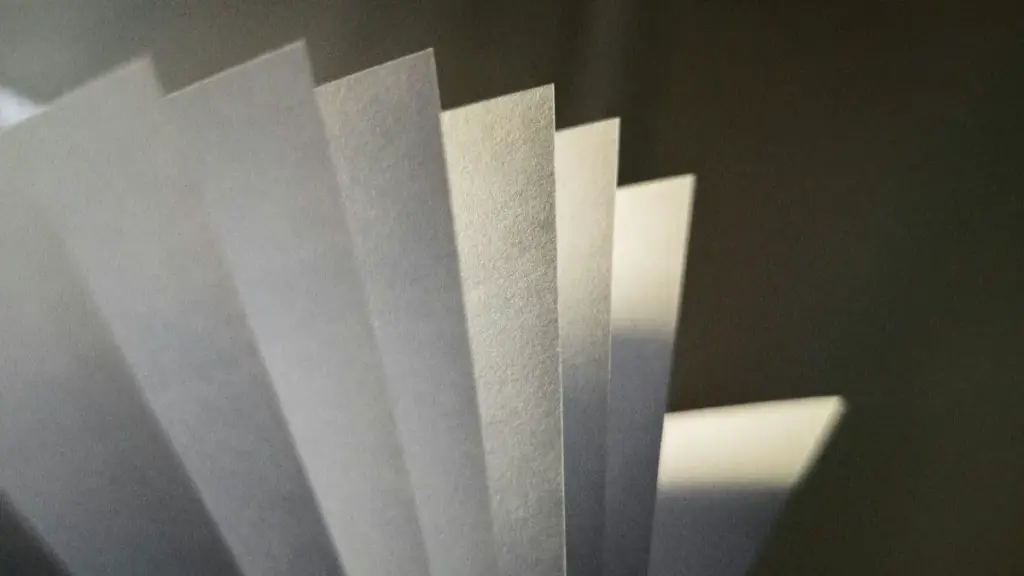
The type of paper you choose can drastically change the final product’s appearance and reader experience. Here’s a breakdown of commonly used book papers:
1. Uncoated Text Paper
Uncoated papers are soft, absorbent, and feel natural. They are usually between 80-120gsm, with a caliper of 100-160 microns. These are ideal for novels and non-fiction books, where long reading sessions benefit from reduced glare. They are not the best for heavy illustrations because the ink may bleed slightly.
2. Carta patinata
Coated papers include gloss, opaco, and silk finishes. Glossy paper reflects light, making images pop, while matte provides a soft, aspetto elegante. Typical thickness ranges from 90-150gsm. Coated papers are excellent for photography, libri d'arte, e riviste. Their smooth surface allows sharper images and vibrant colors.
3. Cartoncino
Cardstock is heavier and thicker, usually 200-350gsm. It is mostly used for hardcover book covers, postcards, and business cards. Its rigidity protects the interior pages and improves durability. Thicker cardstock also provides a premium tactile impression to readers, signaling quality at first touch.
4. Documenti speciali
These include recycled papers, textured papers, and high-opacity sheets. Thickness varies widely depending on manufacturing. Per esempio, a linen-textured paper might feel thicker at 130gsm than a smooth 150gsm sheet. Specialty papers are great for limited editions, libri regalo.
For a more detailed guide on selecting the best paper for your book printing, check out our full article: Libro Carta per la stampa: Una guida completa per scegliere il tipo di carta giusto.
How to Choose the Right Paper Thickness for Your Project
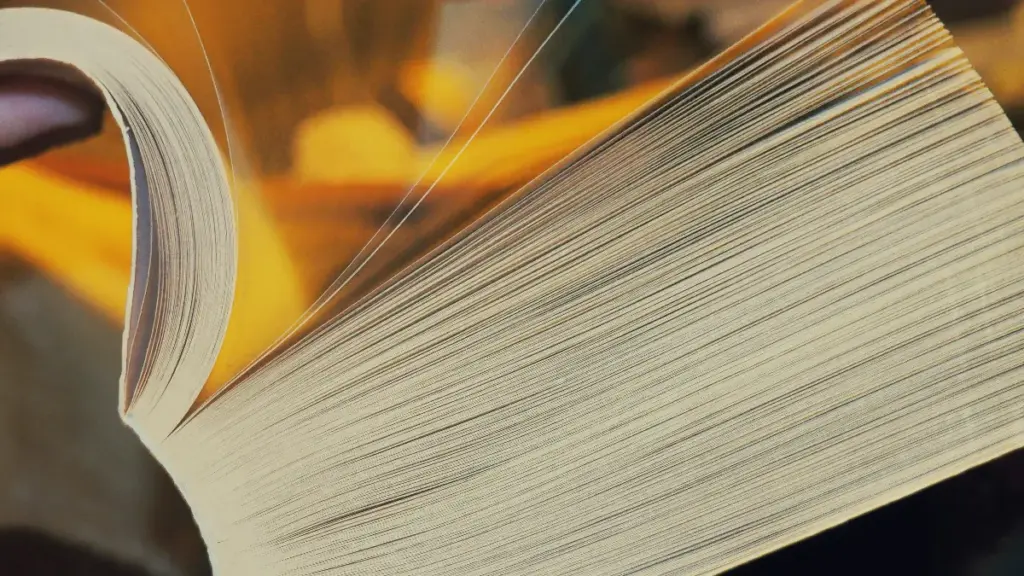
Selecting the right paper thickness is a balance of aesthetics, funzionalità, and practicality. Several factors should guide your decision:
- Book Type and Genre: Fiction novels can use 80-100gsm uncoated text paper for a comfortable reading experience. Art or photography books benefit from 120-150gsm coated paper to make images vibrant.
- Binding Method: Paper thickness affects binding. Perfect-bound books (copertina morbida) can handle thinner papers well, while hardcover books often require thicker papers to prevent sagging and improve spine alignment. If pages are too thin, they may ripple or buckle during trimming.
- Page Count and Size: Books with a high page count may require thinner pages to avoid an overly bulky volume. Conversely, shorter works with high-quality images can use thicker paper.
- Metodo di stampa: The type of printing influences paper thickness choice. Offset printing handles a wider range of paper weights and produces sharper colors on coated sheets, making it ideal for high-volume or image-heavy projects. Digital printing may perform better with slightly thiner papers, as very thick sheets can cause feeding issues in some digital presses.
- Considerazioni sul budget: Thicker and specialty papers cost more. Always balance the premium feel with production budget. A Xin Yi Stampa, we guide clients to select paper that looks and feels premium while remaining cost-effective for print runs.
Looking to Print Your Book? We Make It Easy and Professional
With over 27 years of experience in the book printing industry, Xin Yi Printing provides high-quality book printing solutions. In addition, our strong production capacity allows us to produce over 5,000,000+ books monthly. We also hold official publishing qualifications and are recognized as a national high-tech enterprise. Inoltre, we are committed to sustainability, using FSC-certified paper, Inchiostri a base di soia, and energy-efficient technologies. Anche, we offer one-stop services, ensuring a seamless experience from production to delivery for every project.
Ready to bring your book to life with the perfect paper? Contact Xin Yi Printing today and let’s make your project not only beautiful but also durable, professionale, and reader-friendly.
FAQs
Q1: Does a higher gsm always mean thicker paper?
Non necessariamente. Two papers with the same gsm can feel different. Coatings, fiber type, and pressing affect the thickness.
Q2: What’s the best paper for novels?
Uncoated text paper between 80-100gsm is ideal. It reduces glare, feels natural, and is comfortable for long reading sessions.
Q4: How do I convert U.S. pounds to gsm?
While conversion tables exist, the exact caliper may differ. Consult your printer for precise recommendations based on your book size and binding method.
Q5: Does paper thickness affect shipping cost?
Yes. Thicker paper increases the total weight, which can affect shipping for large print runs. Always factor in paper weight when budgeting.












